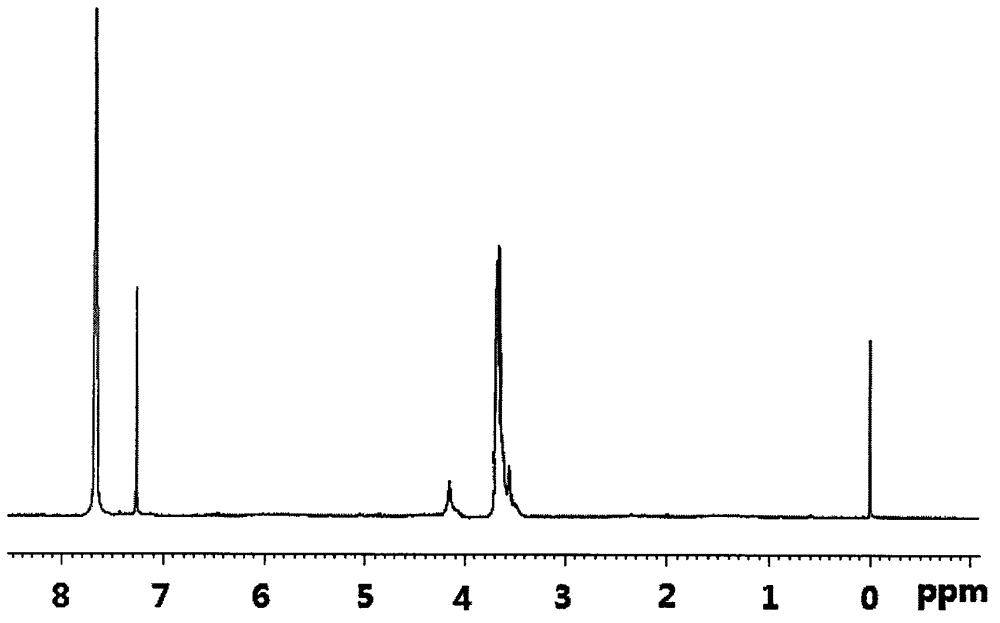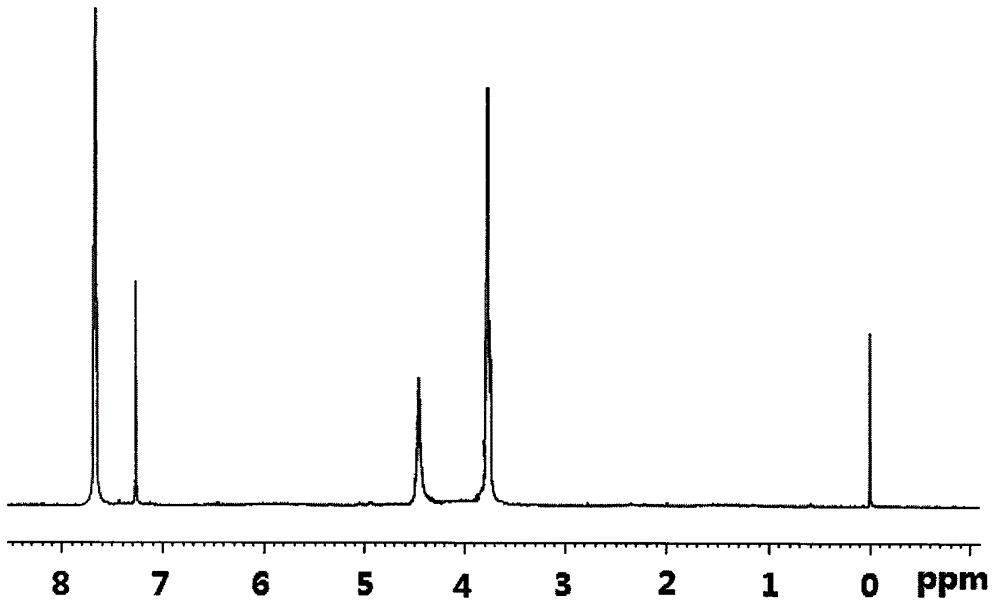2-(3-broMopropoxy)-2(2-dicholoropropoxy) silane compound used as fire retardant and preparation method thereof
A technology of tribromophenoxy and dichloropropoxy, which is applied in the direction of silicon organic compounds, can solve problems such as difficulty in finding substitutes, and achieve the effects of easy purification and separation, low production cost, and stable physical and chemical properties
- Summary
- Abstract
- Description
- Claims
- Application Information
AI Technical Summary
Problems solved by technology
Method used
Image
Examples
Embodiment 1
[0032] Example 1 In the 500ml four-necked flask equipped with agitator, thermometer, dropping funnel and high-efficiency reflux condenser and a hydrogen chloride absorbing device connected in series with a drying tube at the top of the condenser, replace the air in the bottle with nitrogen , add 150ml of diethylene glycol dimethyl ether and 16.99g (0.1mol) of silicon tetrachloride, under stirring, cool with an ice-water bath, reduce the temperature of the reaction system to 0 ° C, drop into the organic solution of silicon tetrachloride Add 12.90g (0.1mol) of 2,3-dichloro-1-propanol, and control the temperature below 8°C during the dropwise addition process. After the dropwise addition, raise the temperature to 35°C for 1 hour, and keep the temperature for 1 hour. After the hydrogen chloride is released, add 66.16g (0.2mol) tribromophenol, heat up to 90°C, keep warm for 4 hours, after hydrogen chloride is released, cool down to below 40°C, then add 12.90g (0.1mol) 2,3-dichloro-1...
Embodiment 2
[0033]Example 2 In a 500ml four-necked flask equipped with a stirrer, a thermometer, a dropping funnel and a high-efficiency reflux condenser and a hydrogen chloride absorbing device connected in series with a drying tube at the top of the condenser, replace the air in the bottle with nitrogen , add 150ml of ethylene glycol dimethyl ether and 16.99g (0.1mol) of silicon tetrachloride, under stirring, cool with an ice-water bath, reduce the temperature of the reaction system to 0°C, and add dropwise to the organic solution of silicon tetrachloride 12.90g (0.1mol) 2,3-dichloro-1-propanol, the dropwise addition process controls the temperature below 8°C, after the drop is completed, the temperature is raised to 35°C for 1h, and the temperature is kept for 1h. After the hydrogen chloride is released, add 66.16 g (0.2mol) tribromophenol, heat up to 75°C, keep warm for 5.5h, after the hydrogen chloride is released, cool down to below 40°C, then add 12.90g (0.1mol) 2,3-dichloro-1-propa...
Embodiment 3
[0034] Example 3 In a 500ml four-neck flask equipped with a stirrer, a thermometer, a dropping funnel and a high-efficiency reflux condenser and a hydrogen chloride absorbing device connected in series with a drying tube at the top of the condenser, replace the air in the bottle with nitrogen , add 150ml of dioxane and 16.99g (0.1mol) of silicon tetrachloride, under stirring, cool with an ice-water bath, reduce the temperature of the reaction system to 0°C, and drop 12.90g of silicon tetrachloride into the organic solution (0.1mol) 2,3-dichloro-1-propanol, the temperature of the dropwise addition process is controlled below 8°C, after the drop is completed, the temperature is raised to 35°C in 1h, and the heat preservation reaction is carried out for 1h. After the hydrogen chloride is released, add 66.16g ( 0.2mol) of tribromophenol, raised the temperature to 80°C, and kept the temperature for 5 hours. Acceleration control temperature does not exceed 50°C. After dripping, rais...
PUM
| Property | Measurement | Unit |
|---|---|---|
| Diameter | aaaaa | aaaaa |
Abstract
Description
Claims
Application Information
 Login to View More
Login to View More - R&D
- Intellectual Property
- Life Sciences
- Materials
- Tech Scout
- Unparalleled Data Quality
- Higher Quality Content
- 60% Fewer Hallucinations
Browse by: Latest US Patents, China's latest patents, Technical Efficacy Thesaurus, Application Domain, Technology Topic, Popular Technical Reports.
© 2025 PatSnap. All rights reserved.Legal|Privacy policy|Modern Slavery Act Transparency Statement|Sitemap|About US| Contact US: help@patsnap.com



